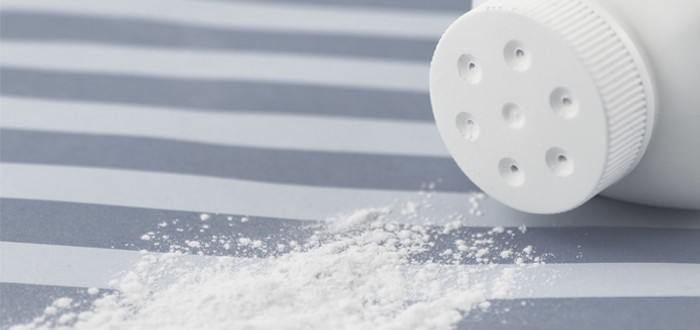A new study offers some of the strongest evidence yet to show that the use of talcum powder contaminated by asbestos is causing a rise in the number of women developing mesothelioma.
Mesothelioma afflicts men overwhelmingly more often than it does women. But, increasingly, mesothelioma is turning up in women, and medical scientists have been at a loss to explain why.
This new research — published last month in the International Journal of Occupational and Environmental Health — points a finger of suspicion directly at asbestos-tainted talcum powder.
The finding is particularly troubling because talcum powder has more uses than straight out of the shaker to help consumers keep dry and avoid chafing on hot, humid days.
Talcum powder also is an ingredient of cosmetics, including foundation, blush and mascara.
Asbestos Exposure in a Container
The cosmetic industry swears that none of the nine U.S. mines from which they obtain talcum powder are contaminated with asbestos.
On the other hand, the U.S. Food and Drug Administration can neither confirm nor deny that the talcum powder and cheap cosmetics flowing into the country from overseas are asbestos-free.
The researchers, meanwhile, are pretty sure they’ve found where the asbestos-speckled talcum powder is coming from.
According to the Seattle Post-Intelligencer, the researchers painstakingly backtracked up through the marketing chain and discovered the source of talcum powder used by a woman who died of mesothelioma.
The researchers — from Mount Sinai School of Medicine in New York and two other labs — indicated they spent more than a year sifting through manufacturer, distributor and supplier records to locate this source.
However, they didn’t reveal the source’s location — so, it could be a mine anywhere on the planet.
The researchers also didn’t reveal the brand name of the asbestos-tainted talcum powder product.
What they did reveal was that the deadly talcum powder they studied contained only small amounts of asbestos contamination. But that was all it took to cause mesothelioma.
“We investigated one historic brand of cosmetic talcum powder associated with mesothelioma in women,” they wrote.
“This brand of talcum powder contained asbestos and the application of talcum powder released inhalable asbestos fibers.”
Asbestos Fibers Stayed in the Air
The researchers indicated that they examined the asbestos-tainted talcum powder under an electron microscope.
An electron microscope is extremely powerful, so there was little possibility of misidentifying the asbestos fibers mixed in with the talcum powder.
In one experiment, they set up a simulation of what happens when a person applies talcum powder while in a bathroom.
They found that the confined space of a bathroom allows asbestos fibers to float for a long time in highly concentrated numbers within a person’s breathing zone.
In fact, the talcum powder settled to the floor long before the floating asbestos fibers.
The women in this study were under the age of 60 at the time they developed mesothelioma. A few were younger than 50.
Despite the researchers’ reluctance to reveal the talcum powder brand or where it came from, their research is important because it offers insight to the troubling trend of women more frequently falling prey to mesothelioma.

